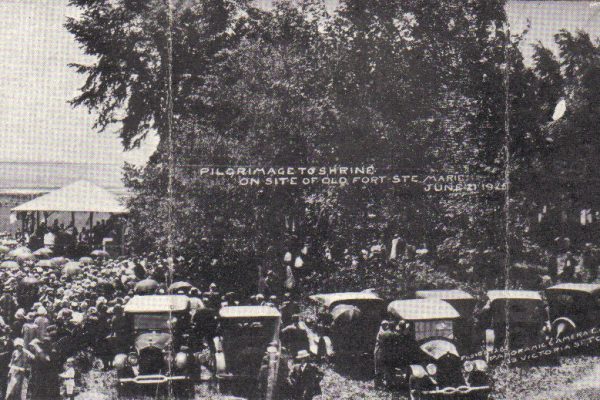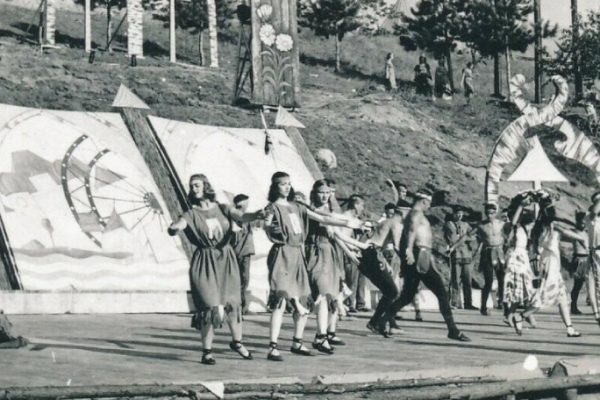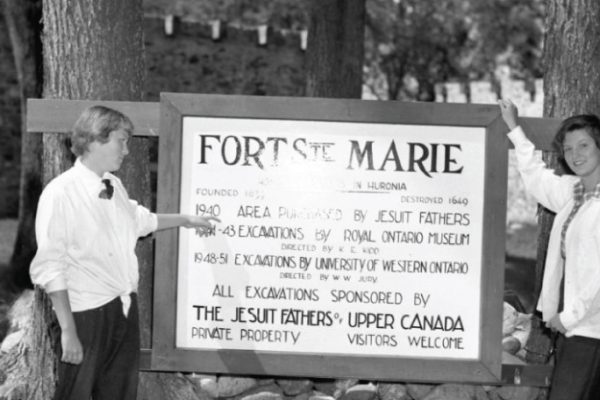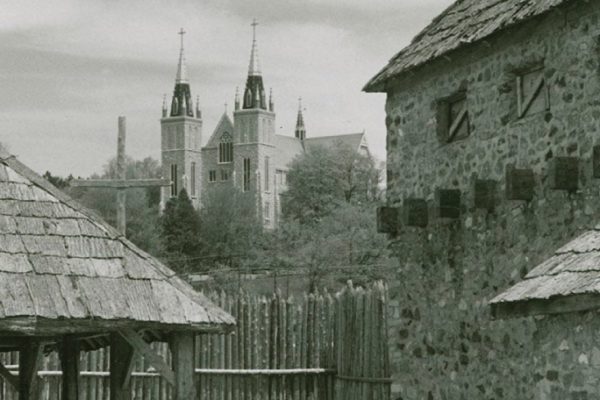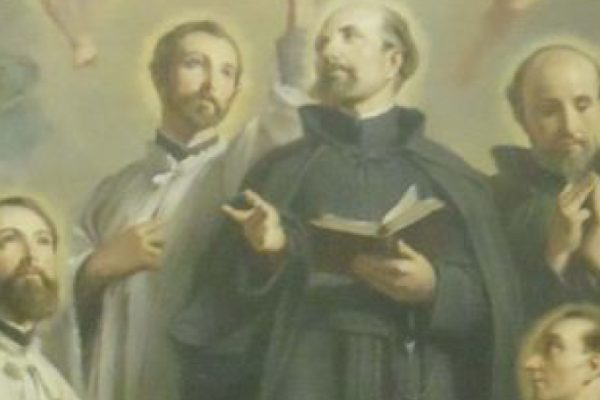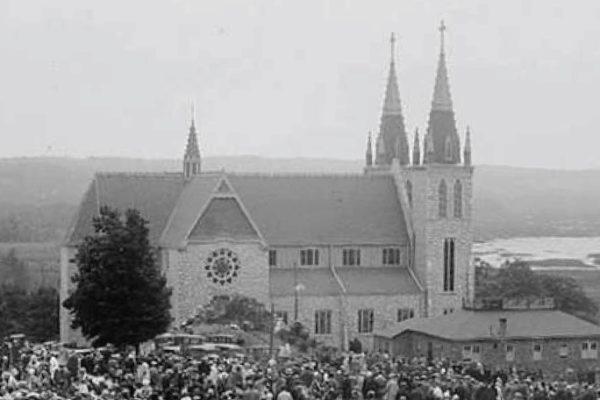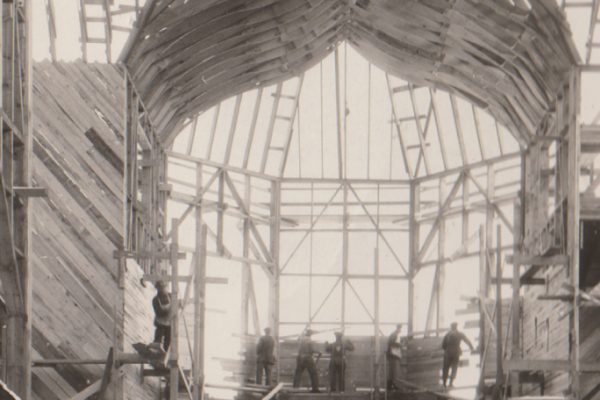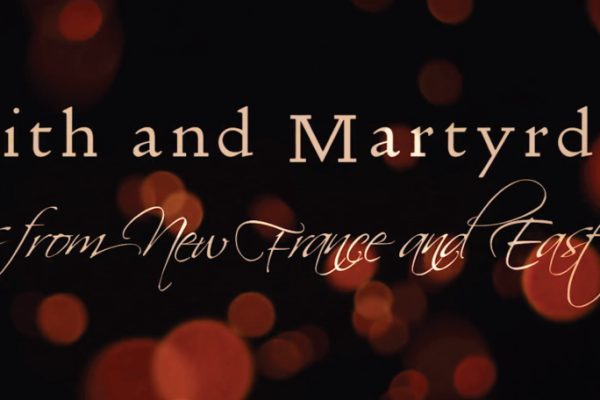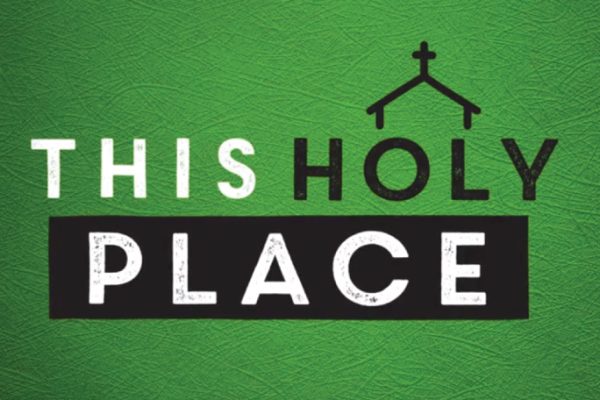Featured
-
-
Martyrs’ Shrine Throughout the Years
Martyrs’ Shrine had evolved throughout the years and had…
Continue reading -
Opening of Sainte-Marie among the Hurons
In 1964 the Jesuits negotiated an agreement between the…
Continue reading -
-
-
-
Construction of the Church of St. Joseph
In June of 1925, Father John M. Filion, then Provincial Superior of English speaking Jesuits across Canada, felt the need for a larger shrine that would be closer both to pure spring water and to the Sainte-Marie mission. Filion purchased the Standin brothers' farm on the hill across the road from the mission. He promised to have a the new Shrine Church built in time for the first anniversary of the Martyrs' Beatification on July 21, 1926. The Shrine was built before the archaeological digging of Sainte-Marie and the burial sites of Brebeuf and Lalemant were discovered. The Jesuits were aware that these men were buried somewhere within the mission field in the ruin of Sainte-Marie, then held as privately owned land. The Shrine was built nearby, hoping that some day this discovery would be realised which would create a large context for pilgrimage and devotion to the martyrs. Acting as his own architect, engineer and foreman, he secured a bank loan of $20,000 and hired 50 local ship builders and begged for some 75,000 board feet of lumber from various companies in the area in the fall of 1925. The roof was placed by the winter of that year. Some of the lumber was repurposed from the Waubaushene shrine. As part of the theme that served to enhance the story of the martyrs' experience in the 17th century, he requested the ceiling be shaped as an inverted canoe. Since birch bark was in short supply for the entire interior, British Columbia three-ply cottonwood called Lamatco was used to face the interior of the church. The lamatco along with dark wood strapping was used to resembled a native longhouse. The incorporation of both native and European design elements in the architecture was intended to make both groups feel welcomed at Mass. Of course, there were other expenses in erecting the magnificent church, so several Ontario bishops had diocesan collections to help pay the bills. Stonemason Reuben Webb used Longford limestone from the east side of Lake Simcoe for the exterior façade of the Church which is in a Belgian Gothic revival style. Fixtures were collected from the Paulists' church in Toronto and from the cathedral in London, both coincidentally undergoing renovations. Chief fixtures included the three altars, communion rail, rose windows, pews, and the 14 Stations of the Cross.
Continue reading -
Video: Historia Vitae, Treasures of Our Faith
In this fifth episode of their series, Historia Vitaewith host Mary Rose Bacani Valenti, Salt + Light TV brings you to two important historical sites in Canada: Martyrs’ Shrine and Sainte-Marie among the Hurons. This series visits museums, shrines, and historic sites around the world and discover the treasures of our faith. From saints and relics to miracles and never-before-told stories, this new documentary series brings the history of our Church to life. Click here to visit a full description of the episode. Trailer Episode 5 Martyrs' Shrine and Sainte-Marie among the Hurons Two different groups, each with their own unique culture, story, and faith, co-existing on common ground. Learn about the impact of the Jesuit Missions on the Wendat people, and how their legacies live on today, featuring two historical sites: Martyrs' Shrine and Sainte-Marie among the Hurons. Watch the Full Episode
Continue reading -
Video: Faith and Martyrdom: Stories from New France & East Asia
This documentary is brought to you by the University of San Francisco's Ricci Institute and Direct Light Studios. This film on Faith and Martyrdom in New France and East Asia, namely China, Korea, Japan, and Vietnam, from the 16th to 19th centuries. It is based on interviews with scholars from across the world who gathered at the Martyrs' Shrine in Midland, Ontario, Canada in October 2018 to share their insights with each other. Trailer Faith and Martyrdom Stories from New France and Asia “Faith and Martyrdom: Stories from New France and East Asia,” a striking new documentary from the University of San Francisco's Ricci Institute and Direct Light Studios. about the early Jesuit missionaries and the communities they met. Watch the Full Video
Continue reading -
Video: This Holy Place: Real People. Real Faith.
In this second episode of their series, This Holy Place with host Emilie Callan, Salt + Light TV invites you to join them in a virtual pilgrimage to Martyrs' Shrine, the National Shrine dedicated to the Canadian Martyrs in Midland, Ontario! Trailer Episode 2 Martyrs' Shrine Go on a virtual pilgrimage to Midland, Ontario, home to the national shrine dedicated to the Canadian Martyrs! To this day, Jesuits maintain an active and spiritual presence in the area and live at the shrine year-round. Watch the Full Episode
Continue reading
- 1
- 2

